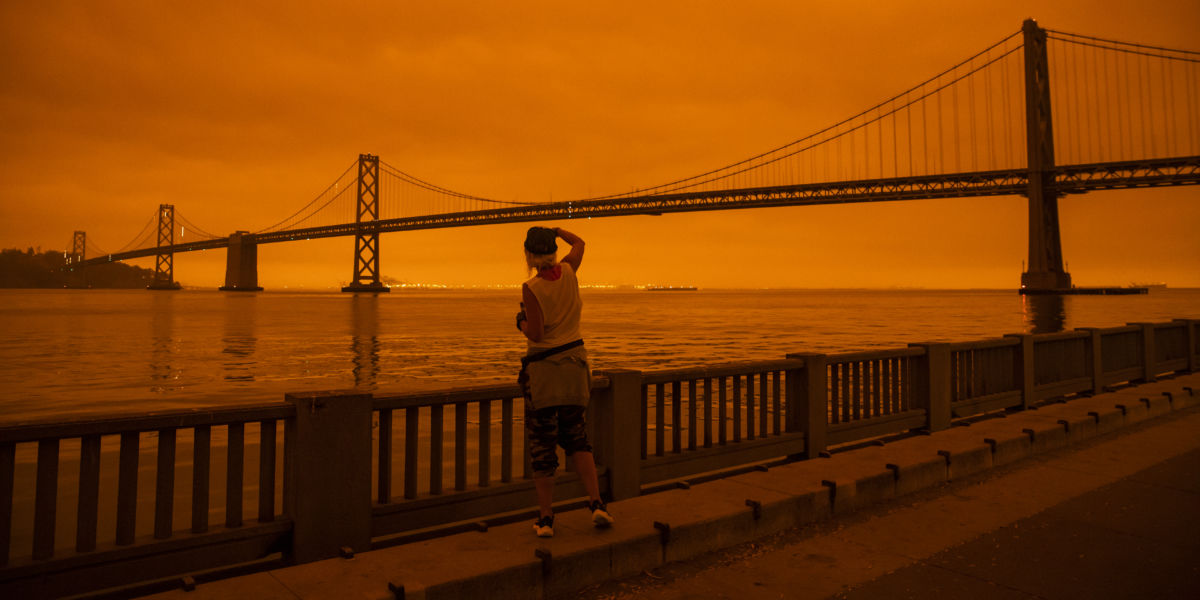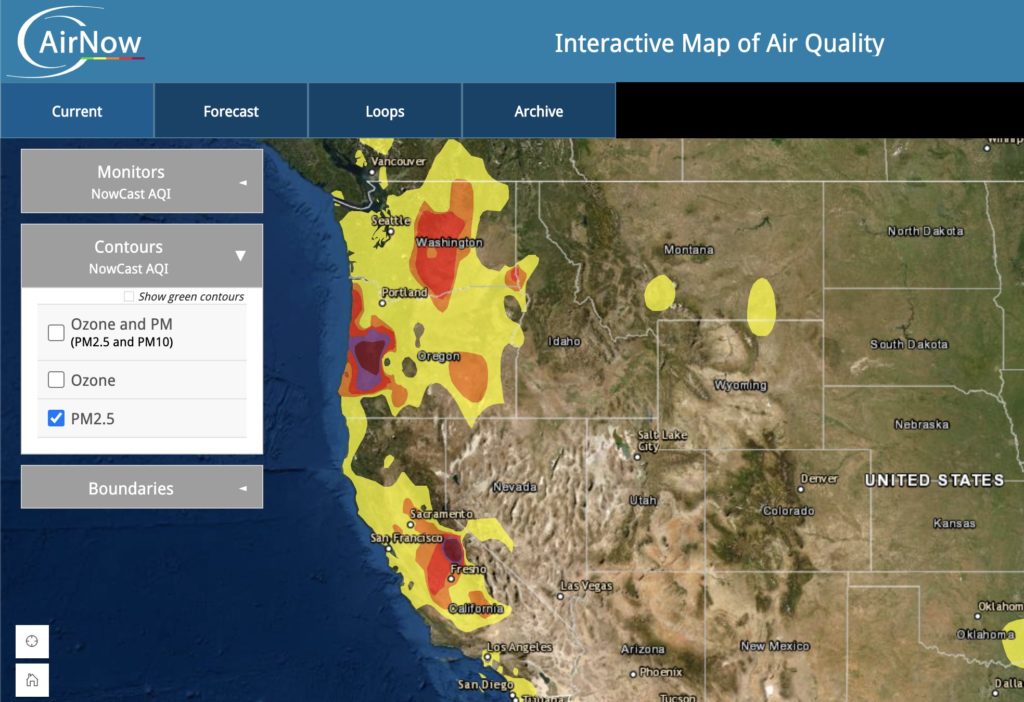
How Do We Breathe During the West Coast Fires? We Asked Dyson’s Air-Quality Expert for Advice
Look at the sky. Now think of your lungs. Yeah, we’re worried, too—so we talked to an expert.

Philip Pacheco/Getty Images
Jim Forrest is a senior design engineer in the environmental design category with Dyson. Based near Bristol in England, Jim’s safely away from the fires now engulfing the West. But he had some specific advice on how to handle filtration and monitoring—now that it’s no longer a nice-to-have but a necessity.
Not surprisingly, Jim’s chief piece of advice is to stay indoors—and use a Dyson machine to clean your air. You might not have a Dyson machine, but much of the advice below still holds true.
Note: We’ve been refreshing the EPA Air Now map for regular updates on air quality severity. It’s an invaluable resource.
With the fires raging on the West Coast now a seemingly annual occurrence, is there anything we need to know about smoke particulate in general?
Jim from Dyson: Smoke from wildfires is typically a mixture of gases and fine particles from items such as burning vegetation, building materials, and other matter. When the smoke is heavy, it can be very visible—for example, the sky may look hazy or have a reddish tint. The CDC says that wildfire smoke can harm you in many ways such as irritating your respiratory system, irritating your eyes, or even worsening chronic heart and lung diseases. If at all possible, it is important to try to reduce your exposure to the smoke as much as you can. For many, that means staying inside and closing windows/doors. A purifier can also help keep clean air circulating in your home and remove any polluted air entering the home through natural ventilation gaps.
Two important things to remember is that the smoke can linger for a long time and it can also move around. We know that air pollution isn’t always visible to the naked eye—so just because it looks cleared, that doesn’t mean that it is 100 percent cleared from the air. The air pollution can also travel through the air to other areas. Wind is a big factor in how far and wide the smoke can travel beyond the area immediately impacted by the fire itself.
Are there any trends as far as time of day or regional that determine how smoke spreads?
I’d say that wind patterns impact on how smoke spreads. Just as high winds can push the fires along faster, the wind can also manipulate the direction and speed of wildfire smoke.
Would very smoky fires cause the filters on machines to exhaust themselves earlier?
Any situation where the purifier is exposed to excessive amount of air pollution could result in the filter needing to be replaced faster than the average filter. So yes, if you live somewhere where your purifier is being exposed to a significant amount of wildfire smoke, the filter may need to be replaced sooner. Filter life can be found by scrolling through the information screen on the front of most Dyson purifiers or using the Dyson Link app. Dyson experts at our San Francisco and Los Angeles Dyson Demo stores are available to assist with purifier or replacement filter purchases.

Would the smoke dictate different placement of the unit within the room?
No, it would not because of our air projection system. The core principles behind all of our Dyson purifiers is: sense, capture, project. In auto mode, Dyson purifiers will automatically sense any pollutants in the room and will adjust accordingly to capture the pollutants in the HEPA and activated carbon filter system. One of the main areas that sets Dyson apart is project. The air that has been purified is then projected out into the room using Dyson’s Air Multiplier technology. This, along with our oscillation feature, ensures that the clean air is pushed out to every corner of the room and dirty air is circulated back towards the purifier so it can be cleaned. This means that you can place the purifier in any part of the room.
How has the approach to air pollution changed in recent years?
I don’t remember this even being a conversation that long ago when I was coming out of university. We hear a lot about outdoor air quality. We hear a lot about pollution, particularly in indoor inner-city areas. Transport from cars, factories, stuff like that. One of the really interesting points is indoor pollution which isn’t spoken about a lot. We don’t really see it advertised as much. We’re keen to educate people.
One of the biggest changes is in sensing the pollution. It’s not something we can feel or smell. You might walk into a hot room and you can feel that heat. Maybe you notice a slight smell. But pollution isn’t something we can feel hear smell—it’s not something we can detect. The sensors allow us to educate users a bit more as to what’s going on in their environment. When is pollution high? When is it low?
Where does indoor air pollution come from?
The first place is from outdoors. If you just think of the general construction of your house, there’s holes everywhere—under your doors, veintilation systems. But the sneaky way is the products which we use in our indoor environment. A great example is something like a gas stove. Deodorants, dry shampoos, scented candles, pressed woods and fabrics—all these materials and products release pollutants into the air which we breathe in all the time. Cooking releases indoor pollution all the time. You never think about it. You just cook a meal.

